

Author of this article
Hao Zheng: Product Manager at Beijing Mensi Technology Co., Ltd., engaged in research on power communication technology and IoT wireless communication technology, dedicated to the construction and application of LoRaWAN technology both domestically and internationally.
What is the main content of this article?
The development of low power wide area network technology is in full swing, with Long Range (LoRa) and the resulting Long Range Wide Area Network (LoRaWAN) systems playing a significant role and achieving a high level of commercialization.
This article starts with describingthe current progress of LoRa technology, elaborating onthe composition and role of typical LoRaWAN systems, combininga large number of network tests and application cases in different environments, and discussingthe characteristics of operators and enterprise alliances in promoting the construction of low power wide area networks.
At the same time, it showcasessome advantages of LoRaWAN technology, its current status, and foreseeable future, and finally analyzesthe potential coexistence of LoRaWAN with narrowband IoT technology and the strategic differentiation in market services.
1
Technical Characteristics
1. LoRa
In August 2013, Semtech Corporation released a new type of spread spectrum communication chip operating in the Sub-1GHz frequency band, with a maximum receiving sensitivity of -148dBm, primarily targeting the long-range low-power IoT wireless communication market. This technology mainly operates in the ISM free frequency bands worldwide (i.e., unlicensed bands), including the major 433, 470, 868, and 915MHz bands. Compared to other traditional Sub-1GHz chips, LoRa chips improve the maximum receiving sensitivity by 20-25dB, resulting in a 5-8 times increase in transmission distance in applications.
LoRa technology is essentially a spread spectrum modulation technology that combines digital signal processing and forward error correction coding technology. Previously, spread spectrum modulation technology has been applied in military and space communication fields for decades due to its long communication distance and high robustness. The significance of LoRa lies in its ability to provide low-cost wireless communication solutions for industrial and civilian products using spread spectrum technology. Forward error correction coding technology adds redundant information to the data sequence to be transmitted, allowing error code elements injected during transmission to be corrected promptly at the receiving end. This technology reduces the need for data packet retransmissions and performs well in addressing burst errors caused by multipath fading. Once data packets are established and injected with forward error correction coding to ensure reliability, these packets are sent to the digital spread spectrum modulator. This modulator divides each bit time of the packet data into numerous chips, with the configurable range of LoRa modulation chips being 64-4096 chips/bit. By using a high spreading factor, LoRa can transmit small capacity data over a wide range of radio frequency spectrum. When users measure this data with a spectrum analyzer, it appears as noise; however, the difference is that noise is uncorrelated, while data is correlated. Based on this, data can be extracted from noise. The higher the spreading factor, the more data can be extracted from noise, allowing for higher receiving sensitivity. Therefore, the receiving sensitivity of LoRa chips can reach up to -148dBm, and with a transmission power of 20dBm, the link budget of LoRa modulation can reach 168dB.
2. LoRaWAN
In traditional wide area connection applications, connections are mainly made through cellular networks provided by telecom operators, widely adopted across industries such as industrial, energy, transportation, and logistics. However, there are still many device applications that existing cellular network technologies cannot meet, such as water, electricity, gas, and heat meters, municipal pipelines, streetlights, garbage stations, large-scale livestock farming, agricultural irrigation, extensive meteorological, hydrological, mining, and mountain data collection in harsh environments, and remote outdoor operations. If these types of terminals use existing operator cellular networks for connectivity, they may encounter the following issues.
1) Insufficient signal coverage: Many devices are located in sparsely populated or complex environments, where operator network coverage blind spots or insufficient signal strength make it difficult to ensure stable data transmission.
2) High power consumption: Many devices require battery power, and using cellular networks would necessitate frequent battery replacements, which is challenging in many harsh environments.
3) Low cost-effectiveness: The amount of data transmitted by devices is extremely small, and the transmission frequency is very low. Currently, cellular networks are designed for high bandwidth, and using cellular networks occupies network and number resources, incurring monthly data fees.
For these reasons, low power wide area network technology (LPWAN) has become the best choice to fill the gaps in the IoT network layer. In March 2015, the LoRa Alliance was established, led by Semtech, as an open non-profit organization aimed at accelerating the global commercialization of LoRa technology, with founding members including well-known companies such as IBM, Cisco, Actility, Royal KPN, and Swisscom.
The LoRaWAN protocol released by the alliance divides LPWAN into three parts: node applications, communication services (module and base station suppliers), and cloud services, with two levels of encryption in the communication layer during data transmission, making data communication more secure. As of October 2016, the number of alliance members exceeded 400, including 27 national-level operators, with new operators such as France’s Proximus, UK’s Orange, USA’s Comcast, Japan’s SoftBank, South Korea’s SK Telecom, and India’s TATA Telecom. Additionally, the LoRa industry chain includes numerous terminal hardware manufacturers, module gateway manufacturers, software vendors, and system integrators, forming a complete LoRa ecosystem that significantly promotes the rapid development and ecological prosperity of LoRa technology.
2
System Architecture
1. Network Architecture
Currently, the network layer protocol based on LoRa technology is mainly LoRaWAN, with a small number of non-LoRaWAN protocols; however, the communication system networks are all star network architectures, along with simplified and improved versions. These mainly include the following three types.
1) Point-to-point communication.
Point-to-point communication is commonly seen in early LoRa technology, where point A initiates and point B receives, with the option to reply or not. It is recommended to separate frequency points among multiple groups, as shown in Figure 1. By solely utilizing the high sensitivity characteristics of LoRa modulation, this is mainly targeted at specific applications and experimental projects. The advantage is its simplicity, while the disadvantage is the lack of networking.
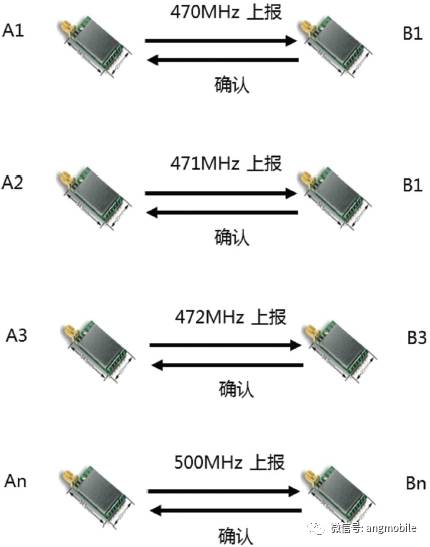
Figure 1 Point-to-point communication
2) Star network polling.
Point-to-multipoint communication, where N slave nodes take turns communicating with a central point, with slave nodes uploading data and waiting for confirmation from the central point before the next node begins uploading, completing a cycle when all N nodes have finished, as shown in Figure 2. This structure essentially still belongs to point-to-point communication but adds time-sharing processing. The frequency points among N slave nodes can be separated or reused. The advantage is low cost for single projects, while the drawback is that it is only suitable for applications with a small number of slave nodes and low real-time network requirements.
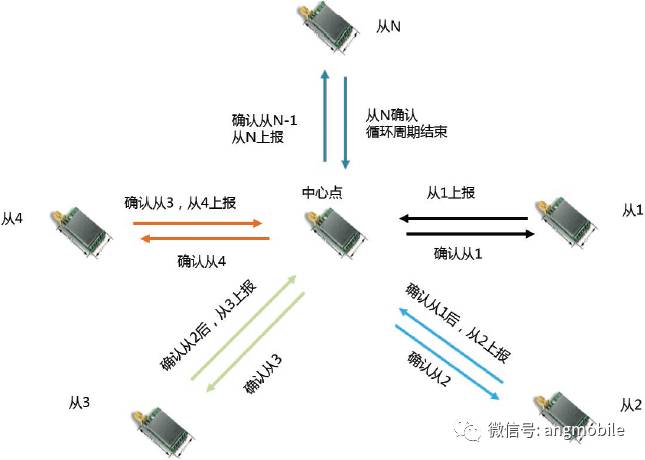
Figure 2 Star network polling
3) Star network concurrency.
As shown in Figure 3, point-to-multipoint communication allows multiple slave nodes to communicate with the central point simultaneously. Slave nodes can randomly report data, and nodes can automatically adopt frequency hopping and rate adaptation techniques based on external environments and channel blockage. Logically, the gateway can receive a combination of signals with different rates and frequency points, and physically, the gateway can simultaneously receive 8, 16, 32, or even more data streams, significantly reducing the probability of conflicts during node uplink. This system has great scalability, can be independently networked, and can be cross-networked, currently mainly referring to LoRaWAN technology in the LoRa field.
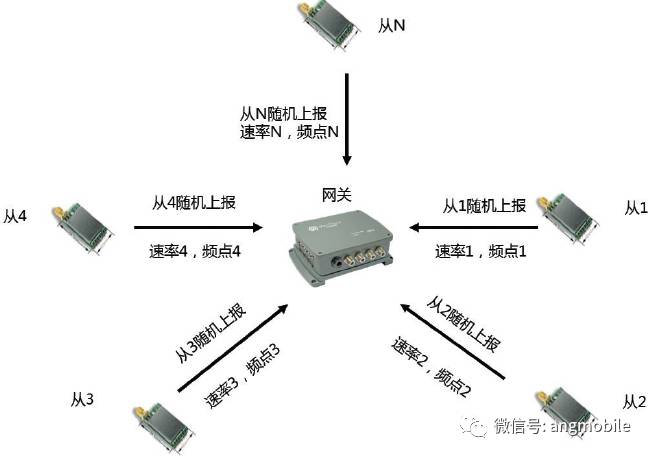
Figure 3 Star network concurrency
2. System Composition
The system composition of point-to-point communication and star network polling is relatively simple, with both ends being nodes divided into master and slave. After the master node receives the uplink data from the slave node, it sends a downlink confirmation frame to the slave node, after which the slave node enters sleep mode, resulting in a simple working mode. Here, we mainly elaborate on the LoRaWAN star network concurrency structure, which is primarily divided into three parts: nodes/terminals, gateways/base stations, and servers, as shown in Figure 4.
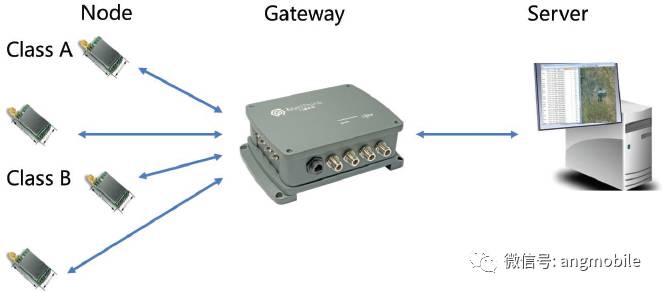
Figure 4 LoRaWAN System Architecture Diagram
Node/Terminal (Node): LoRa nodes represent a vast array of various sensing applications, categorized in the LoRaWAN protocol into three different working modes: Class A, Class B, and Class C. In Class A mode, nodes actively report while remaining in sleep mode, only able to receive downlink data from the gateway during fixed window periods. The advantage of Class A is extremely low power consumption, with applications like water meters typically achieving over 10 years of operational life based on Class A. Class B mode features fixed periodic time synchronization, allowing random determination of window periods to receive downlink data from the gateway, balancing real-time performance and low power consumption, with high time synchronization requirements. Class C mode is a continuous transmit and receive mode, where nodes do not consider power consumption and can receive downlink data from the gateway at any time, offering the best real-time performance, suitable for applications that do not consider power consumption or require substantial downlink data control, such as smart meters or smart streetlight control.
Gateway/Base Station (Gateway): The gateway is a key device for building LoRaWAN networks, aimed at alleviating the concurrent conflicts caused by massive node data reporting. Its main features include: 1) Strong compatibility, allowing all applications compliant with the LoRaWAN protocol to connect; 2) Flexible access, with a single gateway capable of connecting tens of thousands of nodes, allowing random node access; 3) Strong concurrency, with the gateway supporting at least 8 frequency points, allowing simultaneous random 8-channel data concurrency, with expandable frequency points; 4) Full-duplex communication, enabling concurrent uplink and downlink without conflict, ensuring high effectiveness; 5) High sensitivity, with higher sensitivity than non-LoRaWAN devices at the same rate; 6) Simple network topology, with star networks providing higher reliability and lower power consumption; 7) Low network construction and operational costs.
Server (Server): Responsible for managing the LoRaWAN system and data parsing, with most control commands issued from the server side. Based on different functions, it is divided into: Network Server, which communicates with the gateway to parse LoRaWAN data packets and package downlink data, generating network addresses and IDs; Application Server, responsible for encrypting and decrypting payload data, as well as generating some keys; Client Server, developed by users based on B/S or C/S architecture, mainly handling specific application business and data presentation.
Advantages of the LoRaWAN system include: Wide coverage, saving network optimization and construction costs, reducing on-site construction complexity; server-side authentication can achieve cross-coverage, reducing coverage blind spots; centralized management on the server side improves channel utilization and increases system capacity; multi-channel concurrency at the gateway reduces conflicts, supporting node frequency hopping, increasing system capacity; adaptive data rate at nodes reduces power consumption and concurrent conflicts, increasing capacity; high security with two-level AES-128 (Advanced Encryption Standard-128) data encryption; star network structure enhances robustness; and standardization of the LoRaWAN protocol.
3
Typical Environments
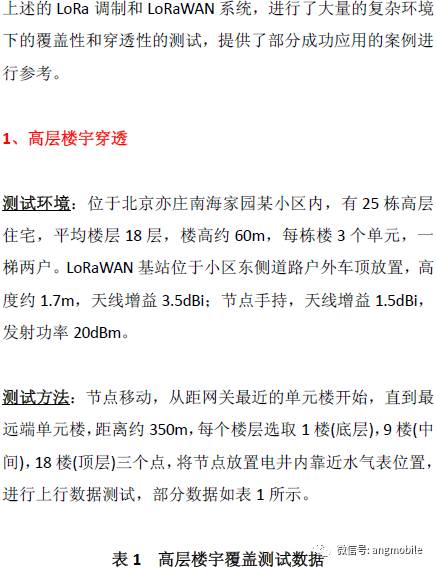
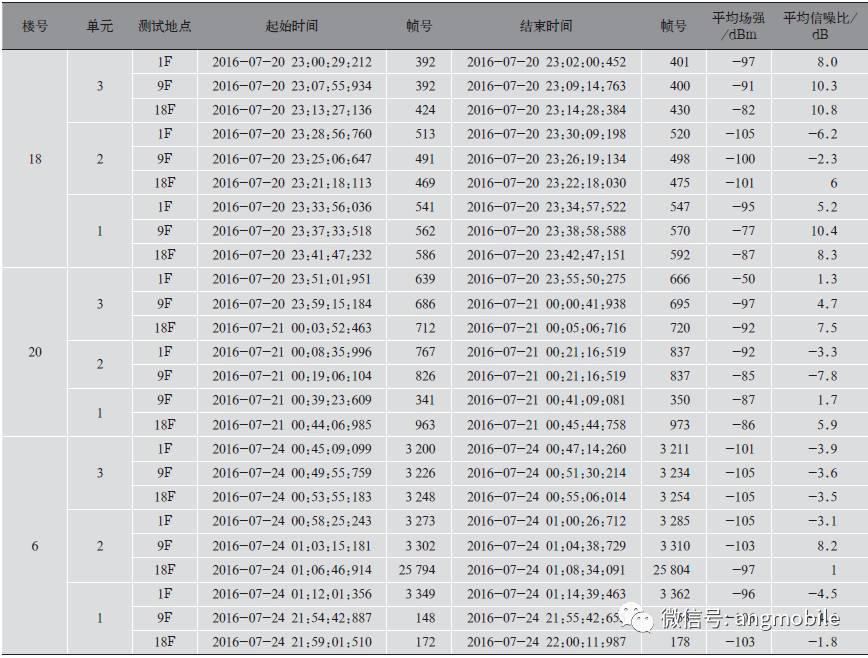
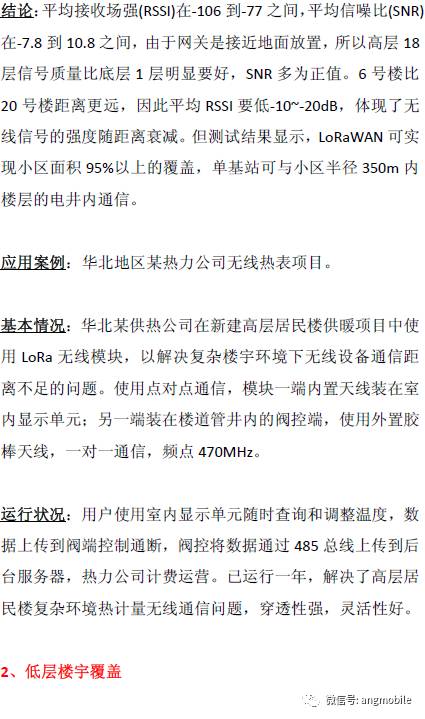
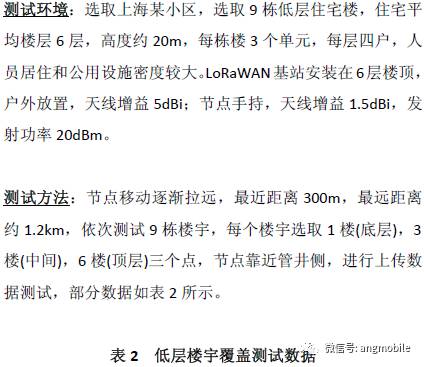
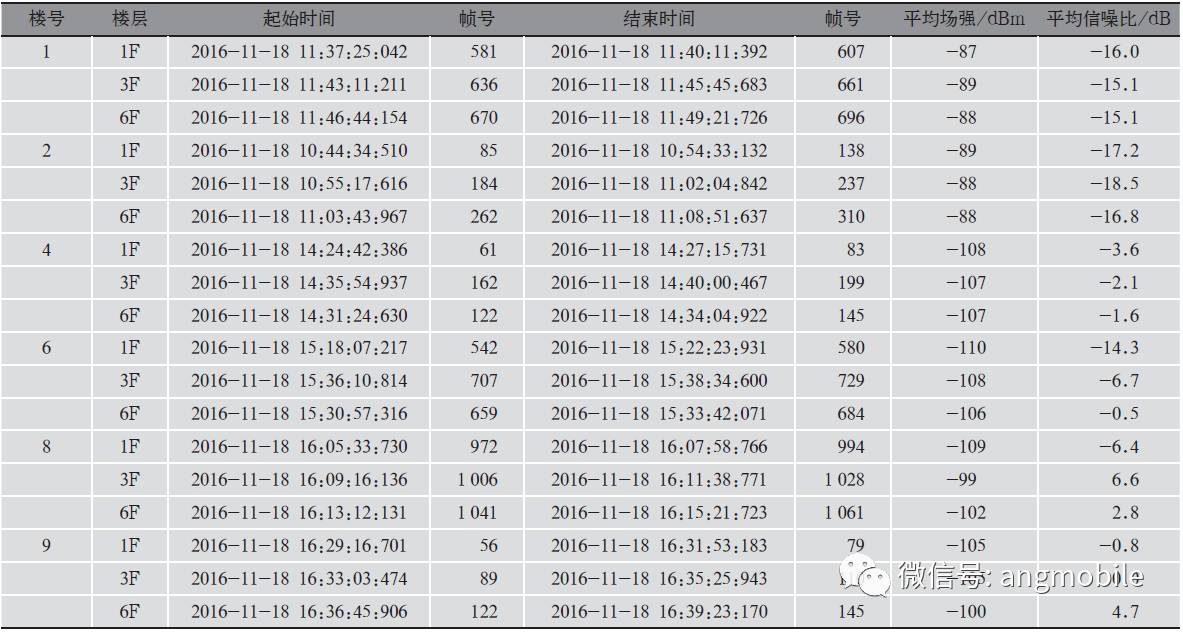
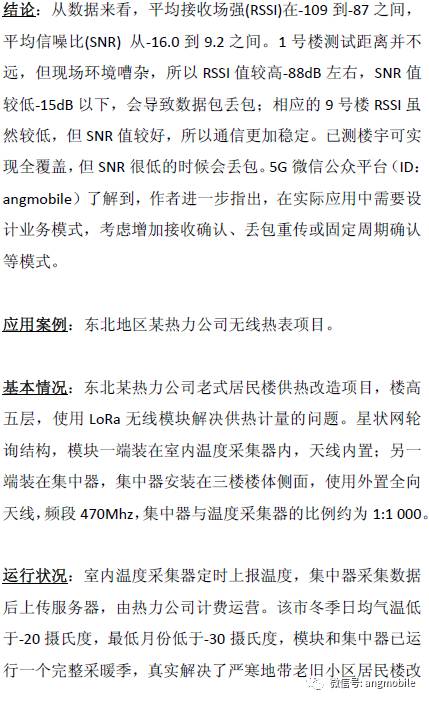
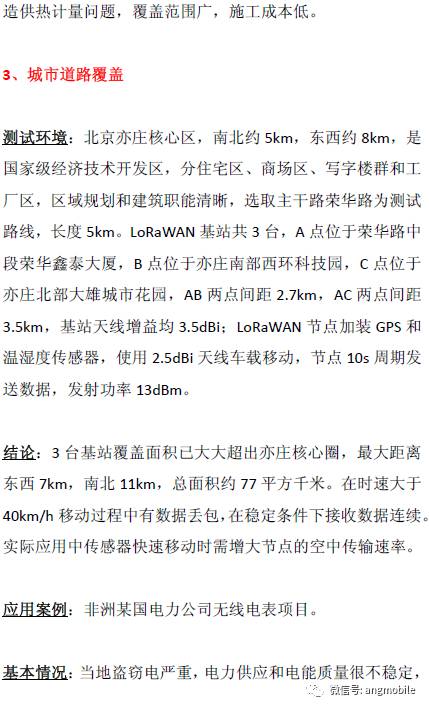
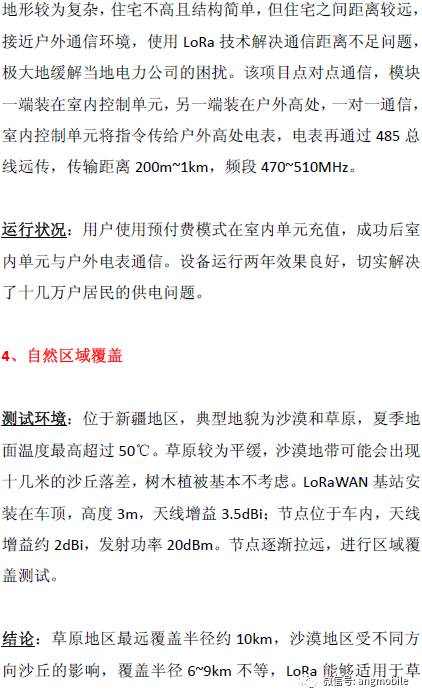
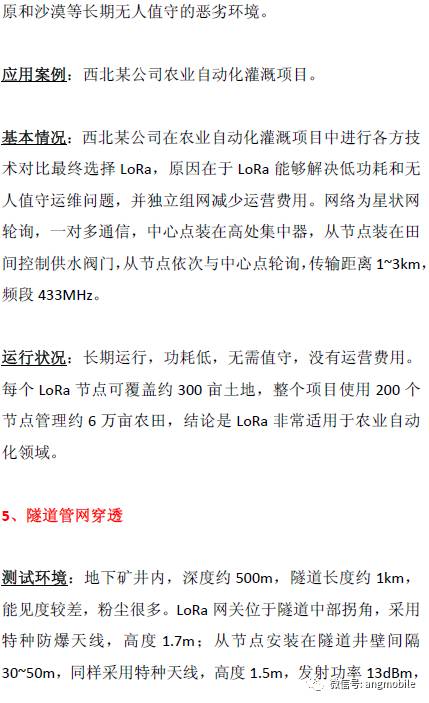
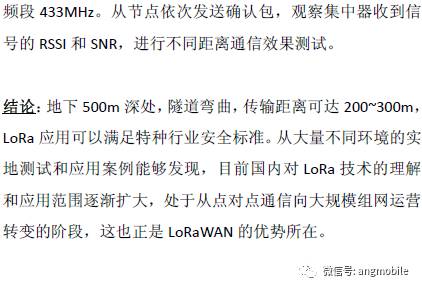
4
Business Operations
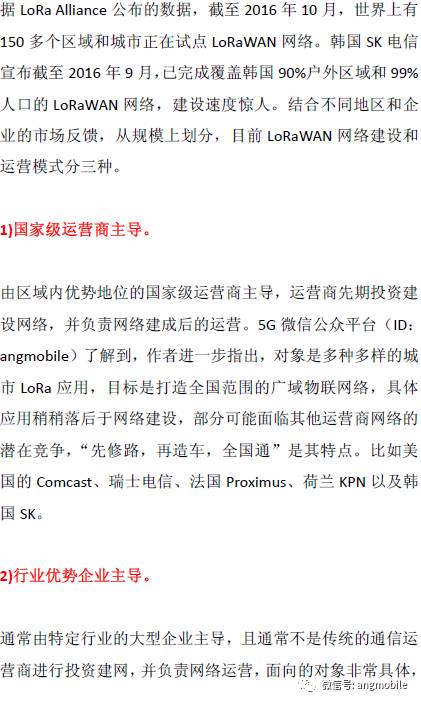
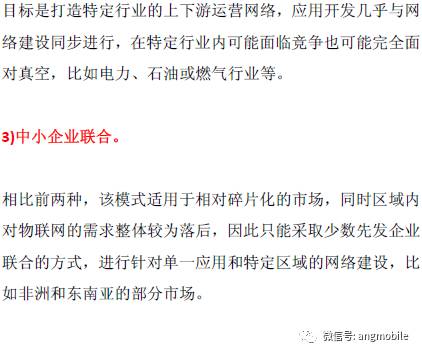
5
Looking Ahead
The future of LoRaWAN is very promising, with the short-term foreseeability being positioning technology based on LoRaWAN. In 2016, Semtech announced applications supporting positioning with LoRaWAN. Currently, a few companies are engaged in positioning research using RSSI-based additional parameter corrections, but the accuracy is not high. However, positioning technology based on Time Difference of Arrival (TDOA) with multiple LoRaWAN base stations has greater commercialization prospects, with theoretical accuracy reaching within 50m, making it more practical. Given the average sleep current of ordinary LoRaWAN nodes is 3μA, time synchronization, and the lack of need for additional positioning chips, LoRaWAN has the potential to replace certain existing positioning technologies on a large scale. The combination of longer distances, low power consumption, low cost, and the ability to position indoors and outdoors distinguishes LoRaWAN from other positioning technologies.
2016 marked the first year of commercialization for narrowband IoT technology in China, which will pose certain challenges and competition for LoRaWAN. However, LoRa has already established mature commercial cases compared to narrowband IoT technology. Narrowband IoT technology has strong support from operators, but LoRaWAN will not be easily replaced, possessing inherent advantages in certain aspects. LoRaWAN allows enterprises to build their own private networks, and many enterprises are reluctant to share private data with others. Therefore, under acceptable investment costs, enterprises prefer to deploy their own private networks and operate independently, making private networks highly attractive. The development of IoT technology is rapidly evolving, with each technology route having its advantages and shortcomings. The future acceptance of technology will ultimately depend on market choices, but the entire industry chain and users will certainly benefit in the end.
This article mainly describes the current domestic and international application progress of LoRa technology and the LoRaWAN system, combined with some typical environmental test instances and application cases. During the writing, Mr. Zhao Mingfei and Dr. Cheng Gang provided valuable suggestions for revisions, and I sincerely thank them for their help; I also appreciate Mr. Liu Hui for his assistance in on-site testing work.
LikeFollow us ↓↓↓For more information, please follow us →We are the leading new media platform focusing on 5G mobile communication: ① Latest status and trends of 5G standards, policies, spectrum, technology, products, IoT, business, and market; ② Two-way wireless networks for broadcasting.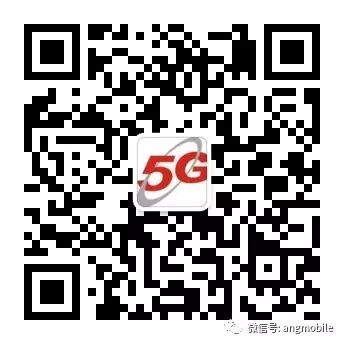 LikeShare this article!For more information, please follow us →
LikeShare this article!For more information, please follow us →